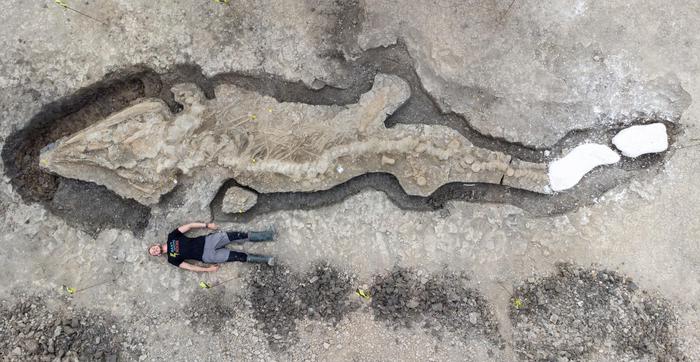Britain's largest ever ichthyosaur is discovered in Rutland Water

Ichthyosaurs are a group of marine reptiles which were contemporaries of the dinosaurs, emerging around 250 million years ago during the Triassic Period. Reaching up to 25 metres in length and possessing many sharp teeth, they are thought to have been the top predators of Jurassic oceans.
Despite the discovery of many ichthyosaur species, including one named after Sir David Attenborough, the evolutionary history of the group is uncertain. While there are many complete specimens, they are mostly found in small areas of Western Europe and North America, leaving many gaps in the fossil record.
Some of the earliest specimens which are recognisably ichthyosaur-like are found around 240 million years ago, with studies suggesting that they probably descended from land-dwelling animals which returned to the sea, something the ancestor of whales and dolphins would later do.
Having taken the plunge, the ichthyosaurs adapted to become the oceans' top predator over the next 150 million years, with preserved tissue and fossils found with their last meal still inside suggesting the reptiles ate large amounts of fish and squid.
After becoming extinct around 90 million years ago, their fossils would be among some of the oldest to be found in the UK, with Mary Anning and her brother Joseph discovering the first specimen in the early 1800s.
Like the Anning siblings, who discovered their finds while walking, the Rutland ichthyosaur was chanced upon by Joe Davis as he crossed the drained lagoon.
'I saw something that looked organic sticking out of the mud,' he says. 'I've previously found whale and dolphin skeletons while working in the Hebrides, and these appeared similar. Along with my colleague Paul Trevor, we followed what indisputably looked like a spine and then something further along that could have been a jawbone. We couldn’t quite believe it!'
The find has been tentatively identified as Temnodontosaurus trigonodon. These were a group of large ichthyosaurs, measuring up to 12 metres long, with different species adapting to eat a range of hard and soft prey.
If confirmed, the Rutland specimen would be the first of its species discovered in the UK.






























